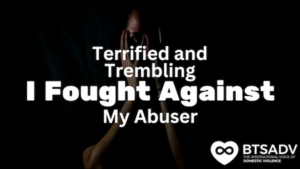By Dana Rutherford
We have all seen the Gabby Petito headlines by now. She was a 22-year-old woman who went missing in August 2021. She was an internet influencer who documented her life traveling the country in a van with her boyfriend, Brian Laundrie. They seemed to have a picture-perfect relationship on social media, but evidence such as disturbing police body-cam footage of an incident on August 12, 2021, showed something much darker as Gabby sobbed inconsolably as interviewed by law enforcement after witnesses reported seeing Brian slapping her (Maxouris, 2021).
The heart-wrenching footage showed a vast difference between her demeanor and his. Gabby was distraught, shaken, and taking a lot of the blame. Brian, on the other hand, was laughing and social with the officers. In hindsight, if you have studied the tactics of abusers, many are likable and will conduct themselves in a way that makes them look trustworthy and friendly, and the victim will usually act fearful, watching for the abuser’s reaction, will make excuses for the attack, in many cases even take responsibility as Gabby did, and will come off more mentally and emotionally unstable. The police let them both go with a separation for the night, leading many to say there needs to be more training in the signs for domestic violence victims and abusers. The remains of Gabby’s body would later be found in September, ruled a homicide by strangulation, and Brian’s remains were found in October after a massive manhunt for both.
One of the biggest conversations that came out of this case was the fact that many missing people are still out there and aren’t being looked for or even mentioned in the media. In fact, the manhunt for Laundrie and Petito led to the discovery of at least nine dead bodies of other missing people that never received the media attention that this story did (Diaz, 2021). Another huge controversy involving this case was termed the “Missing White Woman Syndrome (Robertson, 2021)” meaning that most widely covered missing persons or crime cases appear to be those involving attractive white women, while those who are of minority are rarely seen.
According to the FBI (2021), in the year 2020, there were 543,018 missing person records entered into the National Crime Information Center (NCIC). By the end of the year, there was still a staggering 89,637 unsolved cases. Although white people tend to report the most missing people, not too far behind are black people, and yet, many are never seen in the media. Another shocking fact is that The University of Wyoming stated in the area where Gabby’s body was found, 710 Indigenous people were reported missing between the years 2011 and 2020 (Robertson, 2021). As much as Gabby was worth searching for, the question that many are asking is why aren’t these lives considered just as important as hers?
No matter what the race, sex, or age of a person, the fact is that many missing persons cases are still unsolved. Whether it’s related to domestic violence, foul play, or accidental, we must be diligent in our efforts to find them. Gabby Petito’s case opened the eyes of many to not just domestic violence and how deadly it can quickly become, but also the reality that there are so many people who still need to be located and brought back to their families one way or another. As we watched the tears of Gabby’s mother stream down her face as she pleaded for her to come home, we must remember that she’s not the only mother crying over her missing child. It’s a parent’s worst nightmare to walk through this, and many still are in this very moment.
Every life is worth searching for. We must do better.
References:
Diaz, A. (2021, October 20). At least nine bodies have been discovered since September during the massive searches for Gabby Petito and Brian Laundrie. Daily Mail. https://www.dailymail.co.uk/news/article-10112443/At-NINE-bodies-discovered-manhunts-Gabby-Petito-Brian-Laundrie.html
FBI. (2021, Feb. 4). 2020 NCIC missing person and unidentified person statistics. FBI. https://www.fbi.gov/file-repository/2020-ncic-missing-person-and-unidentified-person-statistics.pdf/view
Maxouris, C. (2021, October 21). A timeline of 22-year-old Gabby Petito’s case. CNN. https://www.cnn.com/2021/09/16/us/gabby-petito-timeline-missing-case/index.htmlRobertson, K. (2021, Sept. 30). News media can’t shake ‘missing white woman syndrome,’ critics say. The New York Times. https://www.nytimes.com/2021/09/22/business/media/gabby-petito-missing-white-woman-syndrome.html









